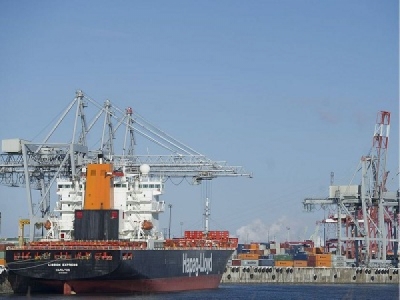
Posted on January 9, 2018
By Brian Slack, Montreal Gazette
Ports around the world have to confront the increasing size of container ships. Few ports possess the natural water depths of up to 15 metres now required by the very largest of them. Typical solutions include dredging, as is the case of most U.S. East Coast ports, or building new terminals offshore, as is the case of Rotterdam and Shanghai.
These challenges now confront the port of Montreal. Its traffic of 1.5 million Teus (20-foot-equivalent units) is many times larger than its East Coast competitors, Halifax and Saint John. Montreal has five container terminals, and has plans to expand operations to a new site located at Contrecoeur. The ship channel from Quebec City to Montreal is maintained at 11.3 metres, which allows passage for ships with a capacity of 4,400 Teus, a size significantly smaller than the 20,000 Teus capacity of the largest vessels in service today.
At present, the Maritime Forum, a committee of industry stakeholders, is evaluating the possibility of deepening the St. Lawrence Ship Channel to enhance accessibility at Trois-Rivières, Bécancour and Sorel as well as Montreal. The potential benefits as well as the costs and environmental impacts are being examined. These kinds of issues have not hindered U.S. East Coast ports from undertaking massive investments. For example, dredging at the port of New York & New Jersey cost $3 billion, and $1.7 billion was spent on raising the Bayonne Bridge to allow mega ships to pass under.
In December 2017, the port of Quebec City announced its intention to develop a container terminal at Beauport. This would exploit a water depth of up to 15 metres at high tide that could provide shipping lines superior scale economies over Montreal. The port authority sees this as an opportunity to diversify its service base, which at present is dominated by bulk commodities.
The challenge for the port of Quebec would be the issue of markets. The local market is relatively small, and most containers would have to be transported elsewhere. Rail connection to the proposed site would require major upgrades and investment. Alternatives include transferring the containers to small coastal ships and barges to connect with ports elsewhere along the river and through the St. Lawrence Seaway to Ontario and U.S. Great Lakes ports. This is unrealistic, because the Seaway is closed for three months a year and transit times would be considerably longer than present Montreal-based rail services to these markets. It may be assumed that most of the potential traffic at the port of Quebec would be trucked, which would raise total door-to-door delivery costs and represent significant environmental impacts at Quebec City in terms of congestion and air pollution.
Both the new container terminal project at the port of Quebec City and the dredging proposal are a response to the commercial imperative of allowing access to ever-larger ships. It is evident that both solutions will be expensive. Favouring one project over the other would be politically difficult. But allowing both projects to go ahead could be counterproductive, since it could enable a shipping line to play one port off against the other, without improving the market share of the St. Lawrence Gateway.
The configuration of the St. Lawrence River imposes a unique character to container shipping. In other markets, ships have opportunities to make several port calls along a coastline to ensure the ships are filled. On the St. Lawrence, this is not an option, as there are no large markets farther downriver. Consequently, container ships discharge and load their full complement of containers at one port only. This has to be taken into account as governments and investors consider the extent to which they can support either or both projects.
Source: Montreal Gazette





